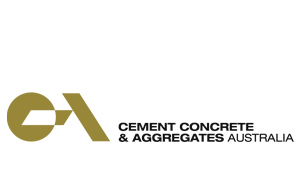Improving the Environmental Performance of Concrete
The Case for Increased Mineral Addition to Cement
Cement is recognised as an energy and CO2 intensive material and there has been considerable pressure from the Government and consumers to reduce its environmental effect in terms of greenhouse gas emission.
The cement industry has made significant improvements to the environmental performance of cement in recent years through the use of alternate fuels and process innovation but further opportunities for improvement are limited. To remain internationally competitive, the cement industry must do more to improve its performance. To this end it has investigated increasing mineral addition in cement which will have a pronounced contribution to the reduction of CO2 emission as well as a reduction in energy consumption.
After two years of research involving production trials, laboratory testing and field trials supported by a fully referenced international literature it was found that increased levels of mineral addition including limestone addition up to 10% can be made without detriment to cement and concrete performance.
This initiative is estimated to result in a reduction of between 375,000 and 750,000 tonnes of CO2 emissions every year without detriment to the performance of concrete.
There is a need to revise the Australian Standard for cement, AS 3972, to allow inclusion of materials leading to reduction in clinker content of cements resulting in reduction of its carbon footprint. The revision of the standard will encourage innovative solutions and improve the competitiveness of the Australian cement industry internationally where similar measures have been adopted by other standards such as the European Standard EN197 and more recently ASTM C1157.
Increased Mineral Addition Investigation in Australia
Mineral additions are defined as AS 3972 as fly ash, slag and limestone. The use of fly ash and slag in cement has been established for many years and their beneficial effect on cement and concrete properties are well documented and understood.
It should also be noted that the nominal 10% limestone addition is in fact the most extreme scenario that can be applied in relation to increased mineral additions levels. This is due to the fact that the alternative acceptable mineral additions types, namely fly ash and slag, are pozzolanic or latent hydraulic materials and would be expected to provide increased cementitious activity relative to limestone.
An extensive investigation of increasing limestone addition in cement to 10% commenced by the cement industry in the second half of 2007. Eight cement manufacturing plants have articipated i the productions trials and testing according to the following programme.
Increased Limestone Additions Results
Results of the laboratory testing and field trials of increased limestone addition in cement are presented. A summary of supporting international literature is also presented.
The production trials and testing results obtained indicate that increasing mineral additions in Type GP cement to 10% will not have a detrimental effect on the properties of cement and concrete produced.
From the cement testing carried out, it was generally concluded that cements with 10% limestone performed similarly to the current Type GP (containing 5% limestone). Compressive strength results we slightly lower, commensurate with the dilution of the Portland cement with the extra limestone. It should be noted that while the limestone has been added through the milling circuit the modified Type GP cements have not been optimised to take account of the slightly different product characteristics due to milling with the higher limestone level. In particular this refers to the Fineness Index/Residue relationship. It is up to the cement manufactuere to conduct their own optimisation and contnue to provide evidence to support that cements containing increased mineral addition meet the performance requirements.
Mortar shrinkage levels for the modified cements were generally a little lower than the controls. There was no significant difference in water sorptivity or chloride permeability between the modified Type GP cement and the control. The sulfate expansion results were slightly higher than the controls. More importantly the addition of supplementary cementitious materials (fly as or slab or their combination) was shown to be more effective in reducing sulfate expansion with the increased limestone addition.
From the concrete testing carried out, setting times were very similar for the two sets of products (GP / 5% and GP / 10% limestone), while 28-day compressive strengths were slightly lower for the "10%" product, and concrete shrinkages were also slightly lower for the "10%" product. It would be expected that once the 45 micron Residue numbers for the 10% limestone cements were optimised, reasonably equivalent concrete strength performance would be obtained. Concrete testing was done with GP, GB (Fly Ash) and GB (Fly Ash and Slag) using the "10%" cement. With the GB cements, the effect of the 10% limestone on concrete strength was essentially negated.
From reports on placing and finishing of concrete in the filed trials, it would appear that there was no discernable differences between concretes using 5% or 10% limestone cements. This was the case when the higher limestone cements were used as either straight GP cement or as GP + (20 or 25%) fly ash.
It is worth noting that the increased mineral addition levels proposed are maximum levels, and combinations of acceptable mineral additions (limestone, fly ash or slag) may be used at levels of up to maximum of 10%. This allows cement producers to optimise the mineral additions combinations to suit both materials availability and cement performance.
Conclusion
On the basis of the results obtained from the trials, the level of the mineral additions (or combination of them) allowed to be used in Type GP cements should be increased to up to 10%.
Increasing mineral additions in cement will have a pronounced contribution to the reduction of CO2 emission as well as a reduction in energy consumption without detriment to the performance of concrete.
Article courtesy of Cement Concrete & Aggregates Australia website - www.ccaa.com.au
